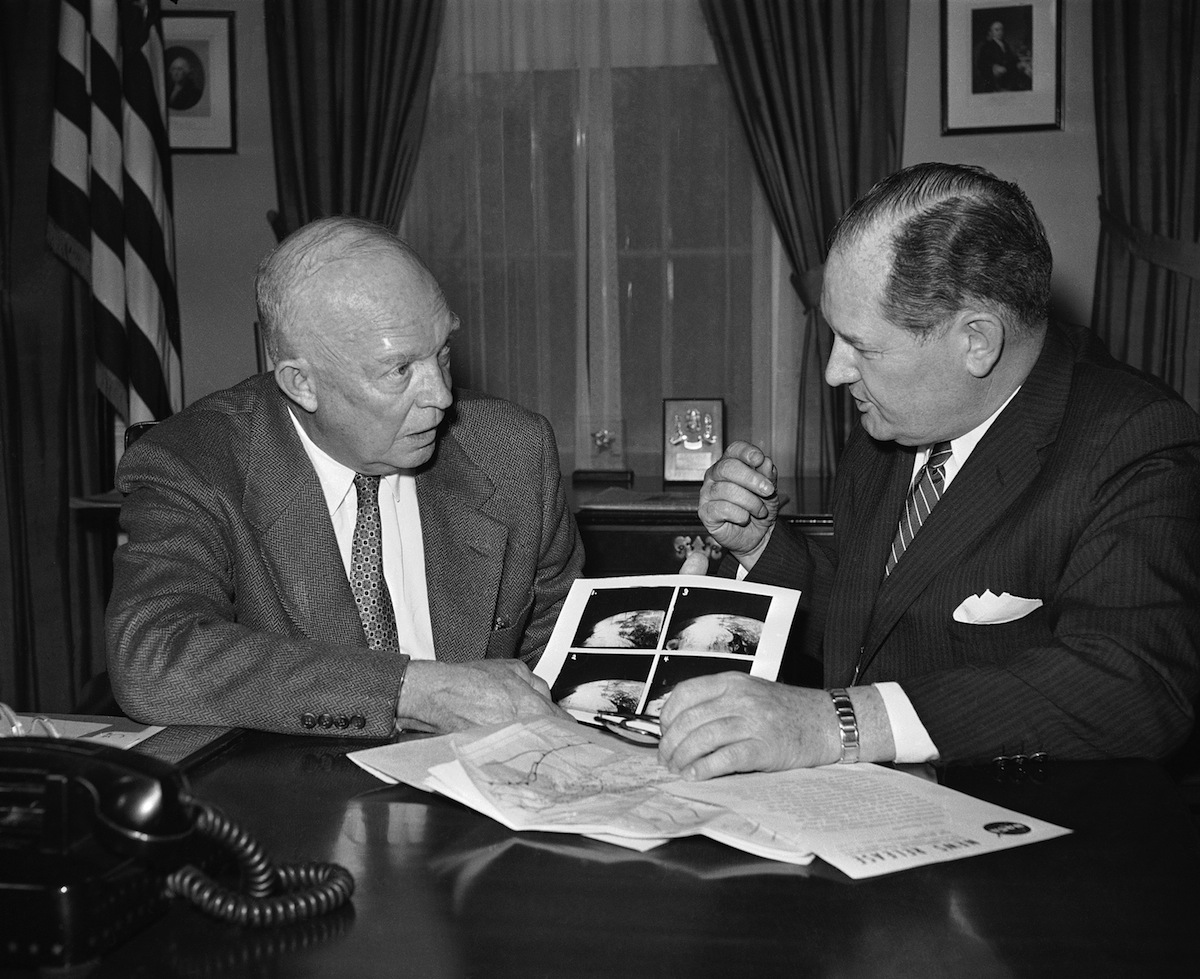
NASA may be devoted to exploring the universe, but the agency owes its existence to a far more earthly concern: office politics.
The National Aeronautics and Space Act, which was signed into law on July 29, 1958, was intended to “provide for research into problems of flight within and outside the earth’s atmosphere, and for other purposes.” One of those other purposes, as TIME noted shortly after the act was signed, was “to overcome the interservice rivalries that had confused the U.S. missile and space programs.”
Before NASA, various branches of the military were conducting research into aspects of space exploration like jet propulsion and satellites, and each wanted a key role in the exciting new field. Giving a single branch agency over all space exploration would alienate the others. Moreover, it could signal that the universe was a battleground as much as a place of inquiry. As the NASA act noted, activities in space “should be devoted to peaceful purposes.”
With the establishment of an agency specifically dedicated to space—and its counterpoint, the military research agency now known as DARPA, which was created at the same time—that bureaucratic nightmare was thought solved.
Or not. As TIME reported that autumn, NASA’s authority to take over peaceful space-centric mission didn’t exactly go down easy:
Energetic Dr. T. Keith Glennan, chief of the newly created National Aeronautics and Space Administration, made his way into the Pentagon office of Army Secretary Wilber Brucker last fortnight with a message: civilian-run NASA, operating under Congressional authority, intended to take over the Army’s missile-making Redstone Arsenal, 2,100 scientists from its missile team, the Army-backed Caltech Jet Propulsion Laboratory in Los Angeles and various other installations.
Brucker lost no time hustling down to the office of Deputy Defense Secretary Donald Quarles to protest. In Chicago Major General John Medaris, Redstone commander, dramatically got aboard a plane for Washington to fight off NASA capture—while a news leak rallied press reinforcements.
President Eisenhower tried to stop the kerfuffle by saying that he hadn’t yet decided who would run the Arsenal and Laboratory in the long run. The Army implied that they’d be fine splitting the difference and giving everything except Redstone to NASA.
A version of that plan is what ended up happening, and before the end of the year NASA’s preeminence in American space exploration was settled. And, TIME reported, there was no sign of future in-fighting—at least not that NASA’s Glennan would be involved with. “I doubt,” he said, “that I can go through this again.”
Read more from 1958, here in the TIME Vault: Fight for Space
More Must-Reads from TIME
- Why Biden Dropped Out
- Ukraine’s Plan to Survive Trump
- The Rise of a New Kind of Parenting Guru
- The Chaos and Commotion of the RNC in Photos
- Why We All Have a Stake in Twisters’ Success
- 8 Eating Habits That Actually Improve Your Sleep
- Welcome to the Noah Lyles Olympics
- Get Our Paris Olympics Newsletter in Your Inbox
Write to Lily Rothman at lily.rothman@time.com